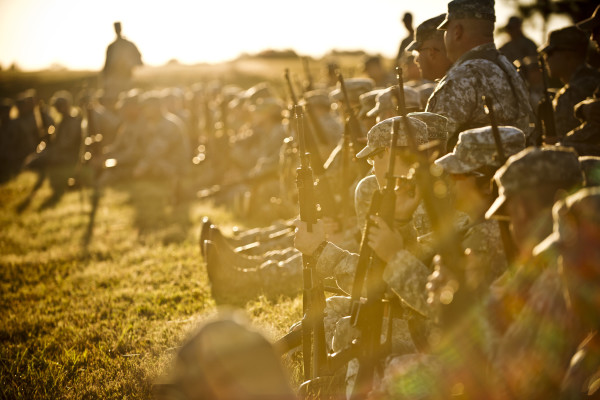

Army leaders spearheading the service’s diversity and inclusion programs said on Thursday that their new efforts would be successful because the Army has a totally different culture today than it did a decade ago.
There are “fundamental differences” in how the Army operates now compared to 12 years ago, said Dr. E. Casey Wardynski, the Assistant Secretary of the Army for Manpower and Reserve Affairs, including the ability to “leverage technology to do talent management.”
He also said the culture itself is completely different because it focuses on the needs of the individual more than the needs of the Army.
“The old culture of the Army was, our units and our folks trusted that the Army would know where they’re needed and when they’re needed. We flipped that,” Wardynski said. “Now, we trust that our individuals and our units know what they’d like to do and what they need, and we will create a system that allows them to come together around those things.”
The Diversity, Equity, and Inclusion Annex — a document that was released earlier this month outlining objectives and goals to maximize diversity and inclusion in the Army — makes mention of several other initiatives and changes that the service has made regarding diversity since 2008. That includes the 2008 establishment of the Army Diversity Task Force, the 2011 development of Army Diversity Roadmaps; and the creation of the Chief of Army Diversity in 2019.
The DEI Annex is meant to help ensure that the Army gains “a competitive advantage” for top talent in the country, and “[maximizes] our understanding of the diverse attributes, experiences, cultures, characteristics, and backgrounds that exist in the Army,” the document says.
“The Army will also use this strategy to communicate to Army families that they belong to and benefit from this strategic approach because the Army values each member of the force and their contributions.”
The annex is a stepping stone in the service’s broader People Strategy, which has been the focal point for Army leaders since it was unveiled last year.
The Army has already acted on some of the priorities listed in the annex, including getting rid of photos and indicators of race and gender on promotion board packets and conducting an investigation of racial disparities within its justice system. The Army also started the Battalion Commander Assessment Program in January, which requires lieutenant colonels and majors to participate in a blind panel interview and a psychological evaluation before they lead a battalion of soldiers.
Other objectives in the annex are broader. For instance, one goal is to “demonstrate leader commitment, engagement, and support to DEI practices at all levels of the Army.” A noble goal to be sure, though Lt. Gen. Gary Brito, the Army deputy chief of staff for personnel, said Thursday that the key was to start at the bottom, and pay close attention to who is joining the ranks.
“Simply ensuring that the talent that came into the Army, the talent that is across the force — you could look at the composition, the organization, of the people with an organization to ensure it represents America, which is key,” Brito said. “I would offer that up not only for race and ethnicity, but of course gender as well, and all the talent that’s needed.”

Wardynski stressed that the efforts had to be a holistic approach at every level of the Army.
“At every piece of this puzzle where the Army engages, from the very earliest phase … all the way up through general officer,” he said. “We believe having a comprehensive approach, which we did not have before, allows us to tie together the resources, the units to commands, and focus their attention in this space of talent and diverse talent, and providing pathways for people to rise to their maximum level of contribution.”
